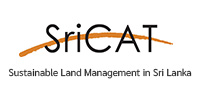.png)
Malaviarachchi M.A.C.D. and Korale-Gedara P.M.
Decomposition of the Determinants of Food Price Inflation in Sri Lanka during the Period 2016-2022
Duration
2022
Funding Agency
-
Leader
Malaviarachchi M.A.C.D
Investigators
Supervisor : Korale-Gedara P.M.
The food inflation in Sri Lanka has been rising since November 2021, at one of the fastest rates and reached a peak of 94.9% (Y-o-Y) in September 2022. This record-high food inflation has threatened the food and nutrition security of millions of people. The study identifies the major drives of food inflation in Sri Lanka during the period 2016 to 2022 using Cointegration and Vector error correction models (VECM). The study analyzed monthly data obtained from Department of Census and Statistics (DCS), Central Bank, World Bank and Food and Agricultural Organization of United Nations. The findings suggest that the recent surge in food inflation is a result of the depreciation of the national currency, and increased fuel prices and agriculture wages. As revealed by the Impulse response function, food inflation responds positively to shocks in exchange rate, world food prices, agricultural wages and global fuel prices. Food inflation responds immediately to changes in exchange rate and the effect of the exchange rate is found to be magnified until the fourth month and then diminish. The variance decomposition analysis further revealed that a significant portion of the variability in food inflation is explained by its own shocks. The exchange rate has a larger short-run effect on food inflation, while world market food prices, fuel prices and agricultural wages have a
persistent, larger long-run effect on food inflation. The findings emphasize the importance of having appropriate policies to stabilize the exchange rate to avoid excessive food inflationary pressure. Further, it is recommended to take measures to improve domestic food production in the country and move toward renewable energy sources to reduce fossil fuel dependency.





